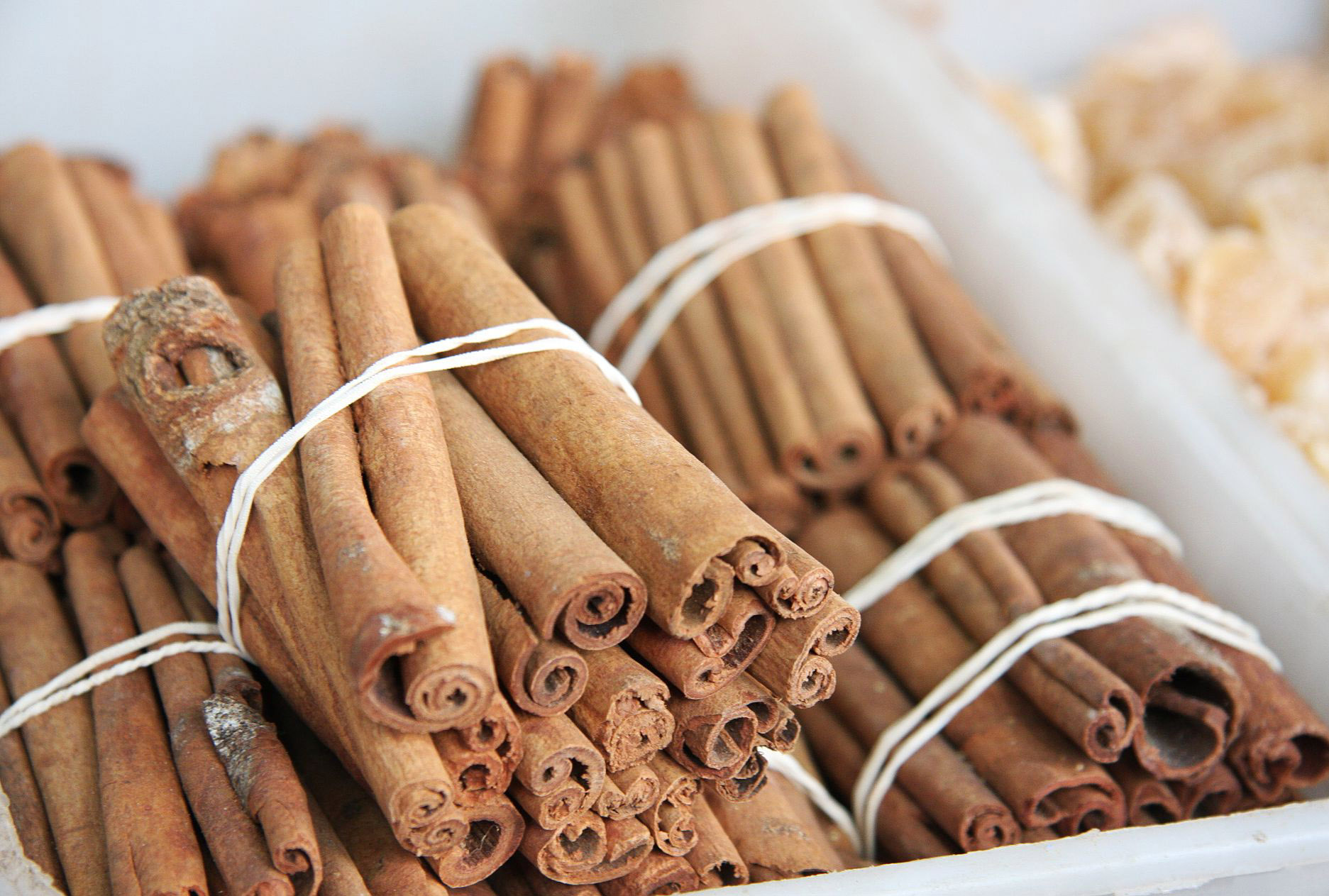By Morgan Crawford, Current ASU Nutrition Student
I have the fondest memories of a small, silver tin that held the most delicious mixture of cinnamon and sugar. It had several holes in the top that made for a perfect vessel to shake the mixture over anything you could think of. I remember the mornings that I was with my grandmother and she would place two pieces of bread in the toaster, smear a thin layer of butter on top, and dust it with the cinnamon sugar. It was so mesmerizing to watch the sugar and butter slowly melt into the warm piece of toast. I think this is when my love for cinnamon truly began!

Did you know that there is more than one variety of cinnamon? The most common type that we see sold in grocery stores and that most of us have in our spice cabinets is known as Cassia Cinnamon. This name is also used to refer to Saigon and Korintje, due to the similarities found between them. These types are grown in places around the world such as China and Indonesia. The other main type is known as Ceylon Cinnamon, which is also called True Cinnamon. Ceylon is grown primarily in Sri Lanka and Madagascar.
A compound known as Coumarin is found at extremely high levels in Cassia Cinnamon, which is actually quite toxic to the liver. For this reason, many people choose to use Ceylon over its much less expensive counterparts. One study that was conducted in Germany found after testing several types of cinnamon, that this toxic chemical compound is around 63 times more potent in Cassia than Ceylon Cinnamon. In small amounts, it does not present major health risks, but for those who take cinnamon capsules or eat cinnamon on a daily basis, they should consider using Ceylon rather than Cassia.
Just like other spices, cinnamon carries an immense amount of health benefits. What I think is one of the most incredible, is its ability to increase insulin sensitivity. Insulin is a hormone produced by the body that helps regulate the metabolism and blood sugar. Insulin takes the glucose in the body and transports it through the bloodstream to the cells that can then use it for energy. In order for glucose levels to remain at a healthy level, insulin must be readily available and know what to do. If these mechanisms are not working properly, blood glucose levels spike to high levels and the pancreas is forced to overwork. For certain individuals, their body does not recognize how to properly utilize insulin and are therefore considered to be insulin resistant. Most people are familiar with this condition being a precursor to type II diabetes.
Studies show that cinnamon has the potential to increase insulin sensitivity, making it an excellent method for managing type II diabetes. I’ll spare you all of the excruciatingly detailed science behind this process, but here is a study that explains it in great depth!
Another element of cinnamon is its anti-inflammatory effects on the body. These are so potent, that it is sold in tablet or capsule form that can be taken like any other vitamin supplement. It is useful for treating gastrointestinal disorders that are associated with inflammation, as well as joint pain and muscle soreness.
Cinnamon is really quite versatile—it can be used in sweet or savory recipes, can be taken as a supplement in tablet form, and can even be made into a salve that is used topically to soothe aches and pains.
For those of you who are cinnamon lovers, here is a recipe that I found on Pinterest and added my own special touches! It combines two of my favorite things–cinnamon and banana bread!
Cinnamon- Banana Bread Recipe
Ingredients:
- 2 cups gluten-free flour
- 1/4 cup brown sugar
- 1/4 cup cane sugar
- 2 tsp cinnamon
- 1 tsp baking powder
- 1 tsp sea salt
- 1/2 cup vegan butter
- 2 tbsp. Bobs Red Mill Egg Replacer (applesauce will also work here)
- 3 tbsp. Maple syrup
- 5-6 ripe mashed bananas
Instructions:
- Preheat oven to 350 degrees Fahrenheit.
- Combine the wet ingredients in a bowl (sugar, melted butter, egg replacer, mashed bananas, and maple syrup)- mix well.
- Combine dry ingredients in a separate bowl (flour, cinnamon, baking powder, salt) – mix well.
- Slowly add dry mixture to the wet mixture and mix until combined.
- Pour batter into a greased 9×5 bread pan.
- Bake for 30 minutes or until a toothpick comes out clean.
- Allow to cool for 10-15 minutes.
- For an extra kick of cinnamon, sprinkle a mixture of cinnamon and sugar over the top immediately after taking it out of the oven.
For more fun articles be sure to check out the Fill Your Plate blog. New articles are posted every week.

